Your Call?
Which two images do you like best? Why?
What’s Up?
Multiple IPT veterans Steve and Elisabeth Shore joined Anita North and me on Tuesday for the drive from Anchorage down to Homer, AK. We arrived at Land’s End Resort on the Homer Spit at 3:30pm and checked into our rooms. We did a bit of shopping after dinner.
Today is Wednesday 12 February 2025. The four of us will be doing two days of songbird photography at a private home in Anchor Point. The first 2025 Homner IPT begins on Friday. If you are in Anchorage or will be in Homer between now and 23 February and would like to join us on the boat for a session or two with the eagles, please get in touch ASAP via e-mail or by text to 863-221-2372.
North Beach at Fort DeSoto Park (south of St. Petersburg and Tierra Verde, FL) has been closed since Milton, the second major 2024 hurricane, destroyed much of the park’s infrastructure. It is slated to be re-opening soon and I hope to visit this spring. The first four of today’s featured images were created on its wild beaches and sandbars. Also of note in each of today’s images is the sharpness and versatility of the Sony FE 400mm f/2.8 GM OSS lens either bare or with either teleconverter. I cannot understand why nobody has grabbed Robert Hollyer’s practically new used copy (below).
If an item — a Delkin flash card, or a tripod head — for example, that is available from B&H and/or Bedfords, is also available in the BAA Online Store, it would be great, and greatly appreciated, if you would opt to purchase from us. We will match any price. Please remember also to use my B&H affiliate links or to earn 3% cash back at Bedfords by using the BIRDSASART discount code at checkout for your major gear purchases. Doing either often earns you free guides and/or discounts. And always earns my great appreciation.
|
|
The Bomb, the Delkin Devices 960GB BLACK CFexpress Type A 4.0 Memory Card |
High Capacity Delkin CF Express Type A 4.0 Memory Cards
At present, there is no longer a need to change a memory card in the field. Both the new Delkin 480GB and 960GB cards have more than enough storage for 99.9% of field applications. Using these new cards, I have never hit the buffer with my a-1 ii despite hammering the shutter button on occasion. Regular readers know that I have been depending on Delkin cards for just about a quarter century. In that time I have never lost a single image due to card failure. I’ve put my Delkin cards in the washing machine and dryer and — after two days, retrieved one from a bag of barbecued spare-rib fat and bones. I got the images off those cards without a problem. Most amazingly, after dropping a card in the parking lot at Nickerson Beach IPT, participant Carlotta Grenier found the card near the ladies’ room four days later after it had been run over by numerous vehicles. After consulting with Delkin, I ripped the mangled cover off the card, put it into the Delkin card reader, and got to enjoy each and every image. I sent the card back to Delkin and they kindly sent me a brand new one. Please do not try that with Sony or San Disk or any of the many cheaper off brand cards.
At a recent dinner in San Diego, Delkin founder, president, and CEO Martin Wood told how his folks were able to recover the data from an industrial card that survived a military jet fighter crash that burned for more than two hours at 2000° F.
The specs for both the Delkin 480GB and 960GB cards are identical:
Max Read Speed: 1830 MB/s
Max Write Speed: 1710 MB/s
Min Sustained Write Speed: 500 MB/s
Records Raw 8K, 6K, and 4K Video
Records High Bitrates and Frame Rates
Records Raw Photos and Rapid Bursts
To help facilitate card usage in almost any environment and keeping your content safe, Delkin has built its BLACK Series with a rugged design that is water and shock proof and is resistant to temperature extremes. In order to further enhance reliability and functionality, the BLACK Series is serialized and protected by a limited lifetime warranty and a 48-hour replacement guarantee upon registration with Delkin.
I have never bought the story that putting all your eggs in one basket is a big mistake. Having to use multiple cards during a single shooting session greatly increases the chances of losing one or more.
You can order your Delkin cards and their great card readers from BIRDS AS ART by clicking here. I recommend minimizing your per GB costs by going with the Delkin Devices 960GB BLACK CFexpress Type A 4.0 Memory Card.
Supporting My Efforts Here
If you enjoy and learn from the blog, are all set for gear, or live overseas, consider leaving a BAA Blog Thank You Gift here.
If you enjoy and learn from the blog, please consider using one of my affiliate links when purchasing new gear. It will never cost you a single penny. To support my effort here, please order from B&H by beginning your search here. Or, click here, to order from Bedfords and enter the discount code BIRDSASART at checkout to receive 3% cash back to your credit card and enjoy free Second-Day Air Fed-Ex shipping. It is always best to write for advice via e-mail.
In many cases, I can help you save some serious dollars. And/or prevent you from purchasing the wrong gear from the wrong shop.
Sony FE 400mm f/2.8 GM OSS Lens
Price reduced a shocking $600.00 on 13 July 2024
Price reduced a shocking $400.00 on 0 February 2025
Used Gear Page veteran Robert Hollyer is offering a Sony FE 400mm f/2.8 GM OSS lens in Like-New condition for a BAA record low $8998.00! (was $9,998.00). The sale includes the front lens cap, the rear lens cap, the lens hood, the lens strap, that hard case & strap, the original product box, and insured ground shipping via major courier to lower-48 US addresses only. Your item will not ship until your check clears unless other arrangements are made.
Please contact Bob via e-mail or by phone at 1-206-359-0018 PST.
I purchased my Sony 400mm f/2.8 two years ago to complement my 600mm f/4. Robert is selling his because he rarely uses it, opting instead for the 600mm f/4! It is far easier for me to handhold the 4 ounces lighter, much smaller, and better balanced 400 f/2.8 than it is to handhold the 600mm f/4. The 400 kills for flight with or without the 1.4X teleconverter. This lens sells new right now for $11,998.00 at B&H and there is a used copy in 9+ condition selling for $10,197.95. Save a handsome $3,000.00 by grabbing Robert’s might-as-well-be-new 400mm GM lens. With either TC, the versatility is amazing and remember, you can’t beat the f/2.8 bokeh! artie
|
|
|
This image was created on 16 November 2023 at Fort DeSoto Park. Seated on damp sand, I used the foot-pod technique with the hand held Sony FE 400mm f/2.8 GM OSS lens with the Sony FE 2.0x Teleconverter and The One, the Sony Alpha 1 Mirrorless Digital Camera). The exposure was determined via Zebra technology with ISO on the Thumb Dial. ISO 600: 1/1250 sec. at f/6.3 (stopped down 1/3 stop) in Manual mode. AWB at 8:10:17am on a cloudy morning. Tracking: Zone AF-C with Bird Face/Eye detection enabled performed to perfection. Be sure to click on the image to enjoy a high-res version. Image #1: Snowy plover (probably worn first winter plumage) on lugworm burrow mounds |
A Snowy Dreamy Plover
I have very little if any memory of creating this image. Recently, a dear friend from the Cape May, NJ days, Julian Hough, an expat Brit, asked me if I had this exact shot — non breeding, not an adult. He needed it for an article he is doing on Kentish and Snowy Plovers for his local Connecticut bird club journal. I found several old ones that fit the bill but was not happy with the quality. Then, I found this one. we were both thrilled.
If you enjoy really good writing, check out Julian’s blog here. He calls it Naturescape Images/The Anglo-American Birding of Julian Hough. The guest post, allegedly written by his son Alex, is a hoot. He does not post often but his writing is superb and I enjoy hearing what he has to say whenever I visit.
As for the photo, I love the soft light, the gentle curves of the worm hills, and the matching color of the subject and the background.
|
|
|
This image was created on 15 April 2024 at Fort DeSoto Park. Seated on dry sand, I used the handheld Sony FE 400mm f/2.8 GM OSS lens and The One, the Sony Alpha 1 Mirrorless Digital Camera). The exposure was determined via Zebra technology with ISO on the Thumb Dial. ISO 800: 1/4000 sec. at f/3.2 (stopped down 1/3 stop) in Manual mode. AWB at 8:22:49am on a hazy, partly sunny morning. Zone AF-C with Bird Face/Eye detection enabled performed to perfection. Be sure to click on the image to enjoy a high-res version. Image #2: Royal Tern breeding plumage in flight |
The Knee-pod Rest Position
When hand holding super-telephoto lenses for flight photography, sitting can be a great option. By resting your left forearm atop your left knee, you only need to raise your big lens a few inches to get the viewfinder to your eye. Not having to raise the big lens from your side greatly reduces potential fatigue,
|
|
|
This image was created on 15 April 2024 at Fort DeSoto Park. Seated on damp sand, I used the foot-pod technique with the hand held Sony FE 400mm f/2.8 GM OSS lens with the Sony FE 2.0x Teleconverter and The One, the Sony Alpha 1 Mirrorless Digital Camera). The exposure was determined via Zebra technology with ISO on the Thumb Dial. ISO 1000: 1/1000 sec. at f/6.3 (stopped down 1/3 stop) in Manual mode. AWB at 10:15:53am on a cloudy morning. Tracking: Zone AF-C with Bird Face/Eye detection enabled performed to perfection. Be sure to click on the image to enjoy a high-res version. Image #3: Red Knot molting into breeding plumage — preening neck |
Wintering Red Knots
Some North American populations of this species winter as far south as southern Argentina while some birds remain along the Gulf coast’s of North America. In some years, flocks of as many as two hundred can be fond at Fort De Soto Park from November through early spring. In late April and early May, some individuals are molting into their handsome breeding finery with brick red breasts and spangled silver and black upperparts. They breed only above the Arctic Circle, most often on Banks, Victoria, and Baffin Islands in northern Canada.
|
|
|
This image was created on 16 April 2024 at Fort DeSoto Park. Seated on damp sand, I used the knee-pod technique with the hand held Sony FE 400mm f/2.8 GM OSS lens with the Sony FE 2.0x Teleconverter and The One, the Sony Alpha 1 Mirrorless Digital Camera). The exposure was determined via Zebra technology with ISO on the Thumb Dial. ISO 800: 1/1600 sec. at f/9 (stopped down 1 1/3 stops) in Manual mode. AWB at 9:19:47am on a cloudy morning. Tracking: Zone AF-C with Bird Face/Eye detection enabled performed to perfection. Be sure to click on the image to enjoy a high-res version. Image #4: Sandwich Tern in breeding plumage — head portrait — unusually long bill |
Stopping Down at Close Range
When working close to the Minimum Focusing Distance (MFD) of a lens, consider going to a smaller aperture to so that you have enough depth-of-field to cover the subject. Remember that at a given aperture, depth-of-field increases quickly as the distance to the subject increases.
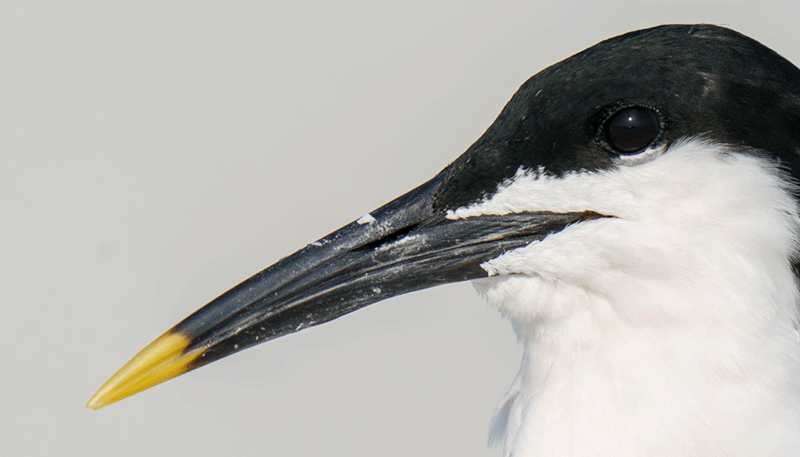
|
Bill and Cap Clean-up
The more you use the Remove Tool, the more adept you become and the better your results will be. It can be used to erase or eliminate, to add, to blend, and to paint. Used properly, it is magical when used to refine edges. The more I experiment with it, the more I am amazed. Its introduction has been a life saver for me.
|
|
The BIRDS AS ART Current Workflow e-Guide (Digital Basics II).You can order your copy from the BAA Online Store here, by sending a PayPal for $40 here, or by calling Jim or Jennifer weekdays at 863-692-0906 with your credit card in hand. Be sure to specify Digital Basics II. |
The BIRDS AS ART Current Workflow e-Guide (Digital Basics II)
The techniques mentioned above and tons more great Photoshop tips and techniques — along with my complete digital workflow, Digital Eye Doctor Techniques, and all my personalized Keyboard Shortcuts — are covered in detail in the BIRDS AS ART Current Workflow e-Guide (Digital Basics II), an instructional PDF that is sent via e-mail. Note: folks working on a PC and/or those who do not want to miss anything Photoshop may wish to purchase the original Digital Basics along with DB II while saving $15 by clicking here to buy the DB Bundle.
Please note: the Divide and Conquer technique was inadvertently omitted from DB II. It is detailed in a free excerpt in the blog post here.
Folks who learn well by following along rather than by reading can check out the complete collection of MP 4 Photoshop Tutorial Videos by clicking here. Note: most of the videos are now priced at an amazingly low $5.00 each.
You can learn how and why I converted all of my Canon digital RAW files in DPP 4 in the DPP 4 RAW Conversion Guide here. More recently, I became proficient at converting my Nikon RAW (NEF) files in Adobe Camera Raw. About three years ago I began converting my Nikon and Sony RAW files in Capture One and did that for two years. You can learn more about Capture One in the Capture One Pro 12 Simplified MP4 Video here. The next step would be to get a copy of Arash Hazeghi’s “The Nikon Photographers’ Guide to Phase One Capture One Pro e-Guide” in the blog post here. Today, I convert my Sony raw files in Photoshop with Adobe Camera Raw.
You can learn advanced Quick Masking and advanced Layer Masking techniques in APTATS I & II. You can save $15 by purchasing the pair.
|
|
The Digital Basics III Video Series |
The Digital Basics III Video Series
I realized more than a year ago that my digital workflow had changed significantly and was toying with the idea of writing a Digital Basics III. More recently, I learned and began working with two great new Photoshop Tools, the Remove Tool and the Luminance Targeted Adjustment Tool. The former is like a smarter Spot Healing Brush Tool on steroids and the latter is a step up from the fabulous Color Mixer Tool. During that same time frame, I came up with a new and improved 2-step noise reduction technique. I still use Divide and Conquer, Quick Masks, Layer Masks, an expanded array of personalized keyboard shortcuts, and tons of other stuff from both versions of Digital Basics.
As soon as I realized that I did not want to take on another large writing project, I realized that by creating a series of videos I could much more easily share all the details of my current digital workflow and much more easily incorporate additional new tips, techniques, and tools as I went. And so, The Digital Basics III Video Series was born.
You can order the first five videos in Volume I — 15 detailed image optimizations that cover a wide variety of challenges, by clicking here. The videos will be most valuable for folks using the latest version of Photoshop (2024) or Lightroom along with Topaz DeNoise AI and Topaz Sharpen AI.
|
|
|
This image was created on 1 May 2024 at Fort DeSoto Park. Seated on dry sand, I used the toe-pod technique with the handheld Sony FE 400mm f/2.8 GM OSS lens and The One, the Sony Alpha 1 Mirrorless Digital Camera). The exposure was determined via Zebra technology with ISO on the Thumb Dial. ISO 1000: 1/2000 sec. at f/5.6 (stopped down 2 stops!) in Manual mode. AWB at 8:19:06am on cloudy morning. Tracking: Zone AF-C with Bird Face/Eye detection enabled performed to perfection. Be sure to click on the image to enjoy a high-res version. Image #5: Ruddy Turnstone in breeding plumage |
Full Breeding Plumage
Several species of shorebirds including but not limited to Black-bellied Plover, Ruddy Turnstone, Sanderling, Dunlin, Short-billed Dowitcher, Western Sandpiper, and the aforementioned Red Knot complete molting by late April or May and on occasion, can be found and photographed at Fort DeSoto. For me, each find is a treasure. A RUTU this richly colored is almost surely a male.
Do not ask me why I stopped down two stops for this one. That said, this image is incredibly sharp at 800mm with the 2X TC in place.
|
|
|
This image was created on 1 May 2024 at Fort DeSoto Park. Seated on dry sand, I used the toe-pod technique with the handheld Sony FE 400mm f/2.8 GM OSS lens with the Sony FE 1.4x Teleconverter and The One, the Sony Alpha 1 Mirrorless Digital Camera). The exposure was determined via Zebra technology with ISO on the Thumb Dial. ISO 1600: 1/2000 sec. at f/8 (stopped down 2 stops!) in Manual mode. AWB at 8:50:14am on a cloudy morning. Tracking: Zone AF-C with Bird Face/Eye detection enabled performed to perfection. Be sure to click on the image to enjoy a high-res version. Image #6: Great Blue Heron scratching |
Shooting Up
There are several locations at Fort DeSoto where you can get right below the birds and shoot up at a variety of herons and egrets. Several types of images can be made when you find the right bird in the right spot. Stopping down is generally a good plan though in this instance with a side view of a scratching great blue, it was not entirely necessary.
I love all the angled lines in this one.
Typos
With all blog posts, feel free to e-mail or to leave a comment regarding any typos or errors.

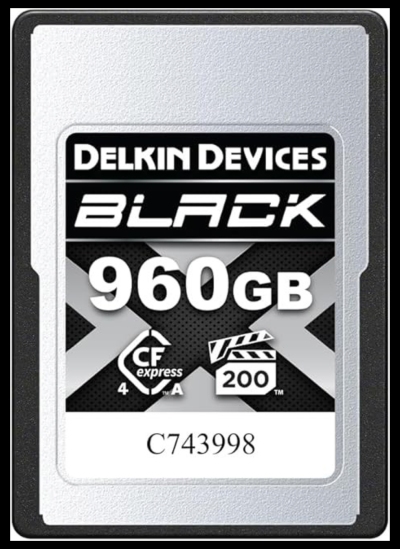
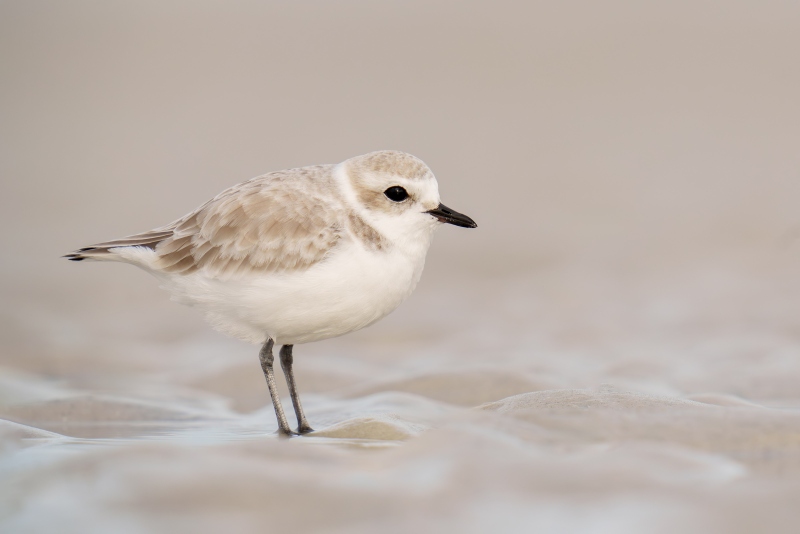
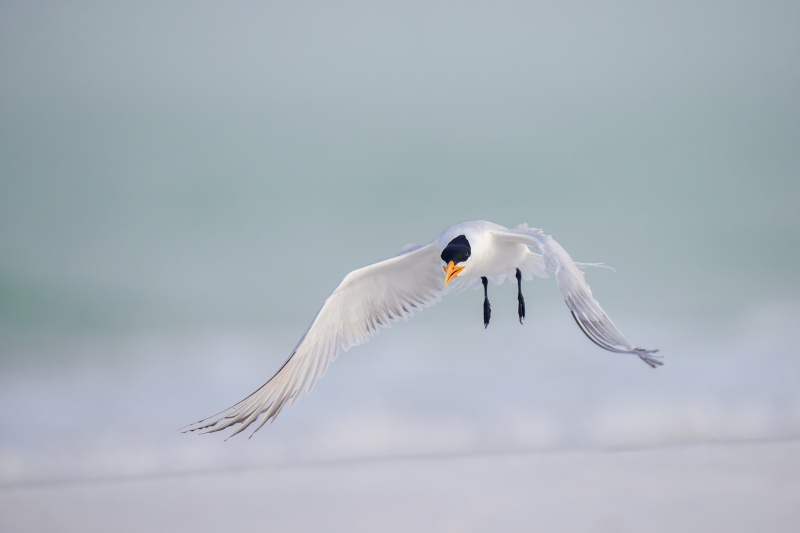
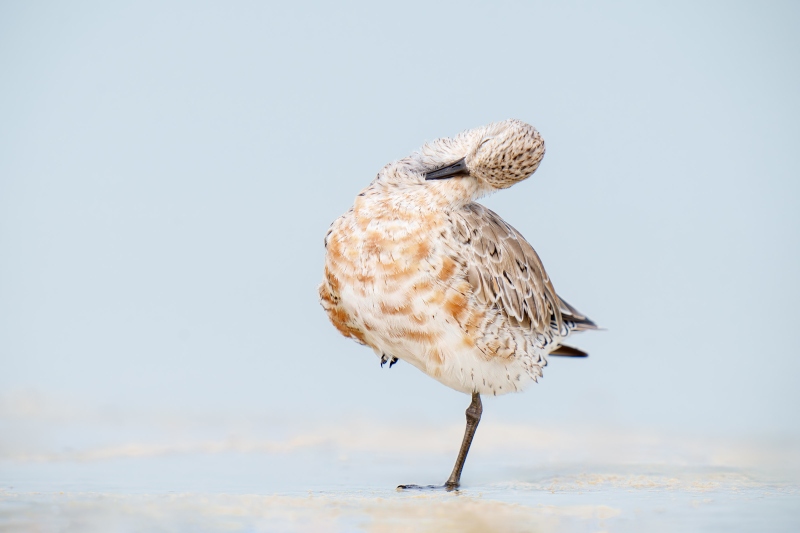
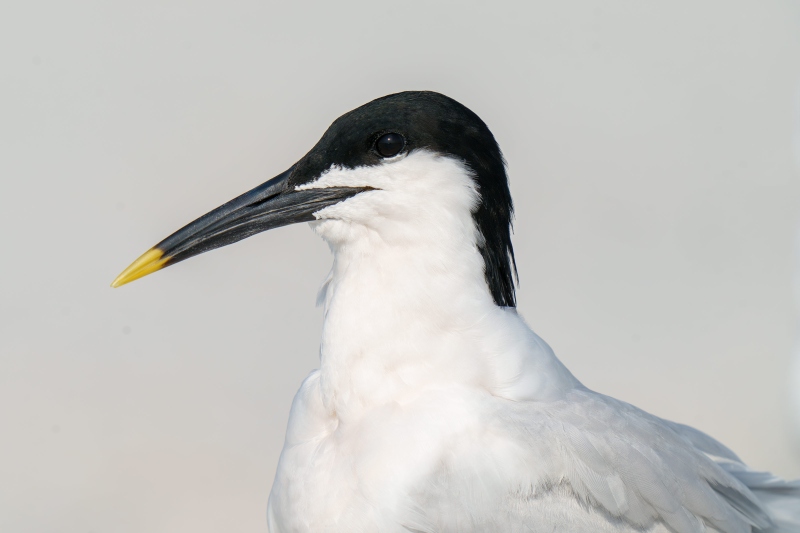
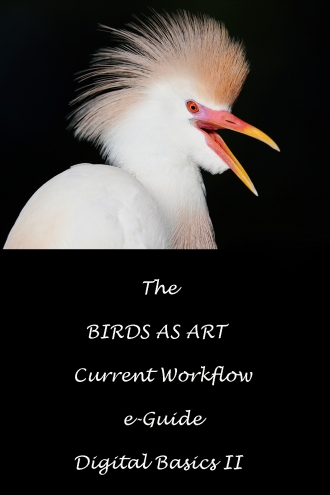
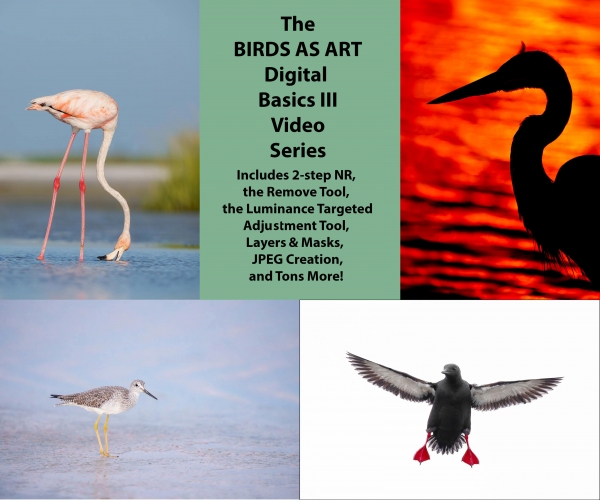
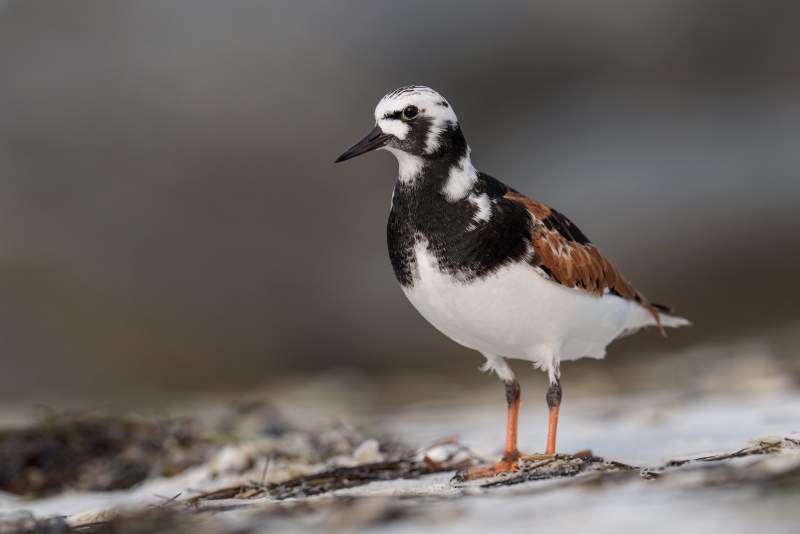
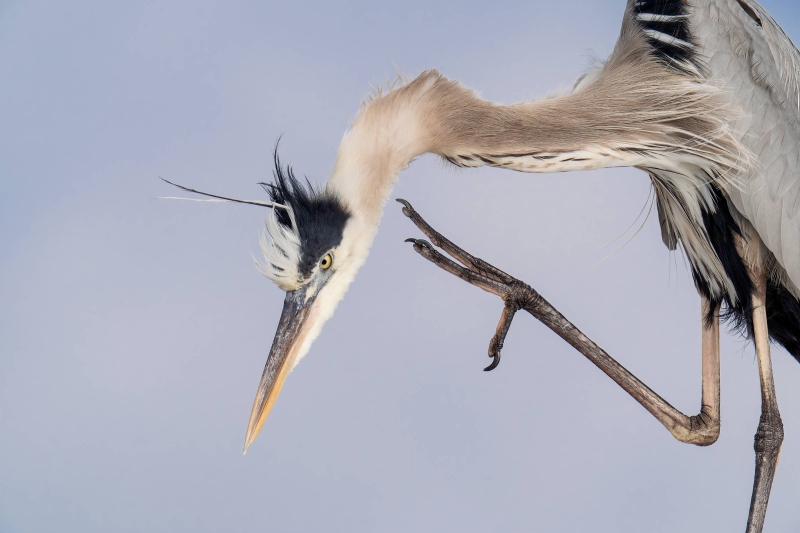









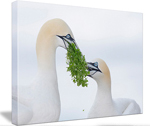



Image #1 and #6. Love the Image #1
Picking a favorite from Ft D is nigh impossible, but #1 is as pure as the wind driven snow.
Snowy, Ruddy (like how ground cover kinda matches the ruddiness of the bird) and the Heron scratching. Have fun be safe. Looking forward to some song bird pics.
My favorite is the plover. I love the feel of the photo. Warm and soft. Color, light and texture are all nicely done. Then #2 royal tern. I love the shape of the wings with the upturned feathers. The tail feathers get in the way of the wing lines. Then #5 Rudy Turnstone. Again I am drawn to the colors (similar to #1). It give the photo a nice balance. Then #4, pretty, but I wouldn’t hang it on my wall then #6. Lines are great and image is comical, but the awkwardness of the bird has me disliking the image
Welcome and thanks for your comments.
a
My first choice is Gt blue scratching. it’s humorous and unique behavior. Second is the snowy plover for the soft light and color matching.
Great examples, Artie.
Enjoy Alaska, and be well out there.
Glad that Ft. De Soto will be opening up soon. What dates are you thinking about for am IPT?
My favorites are #6, the great blue scratching — love the foot front and center and #1, the monochromatic image of a snowy plover.